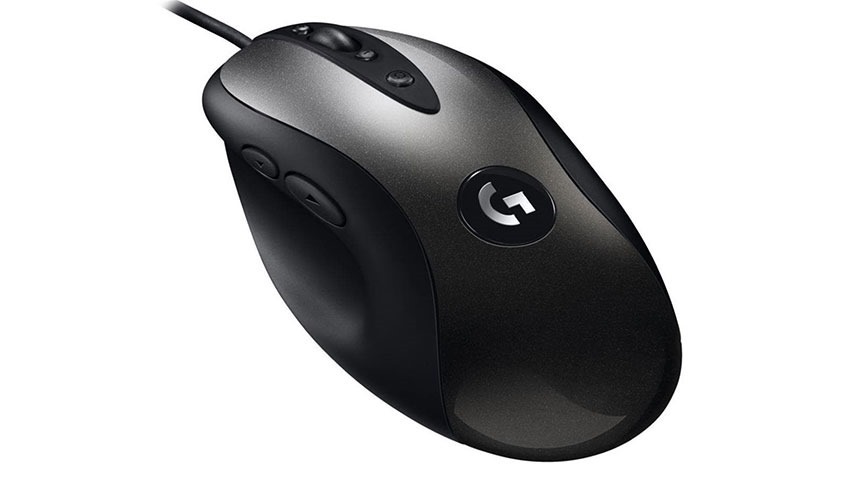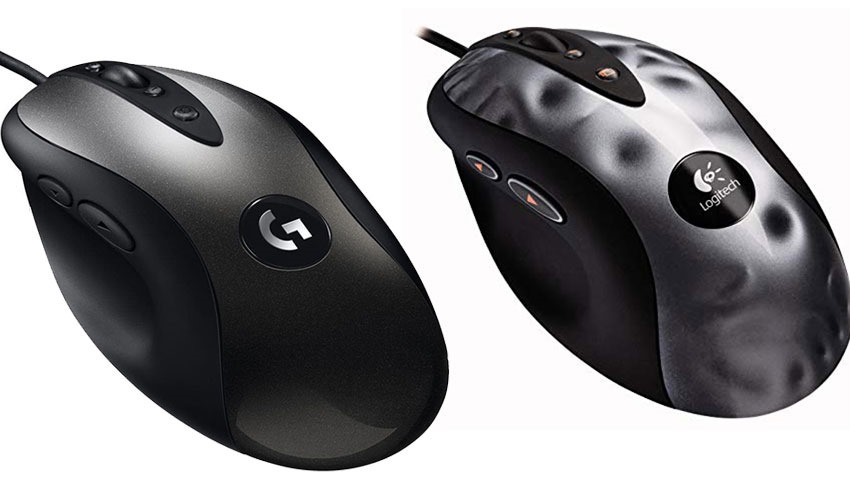If you’re an old-school PC Gamer from before many fancy peripherals were even thing, there are probably two mice that you remember fondly. At least, there are for me – and both have seen a resurrection in recent times. The first is, of course, Microsoft’s Intellimouse. It was the first optical mouse I ever owned, and the thing lasted for over a decade before finally giving up its digital ghost. When I started getting serious about playing games though, I moved towards another mouse that would become unfathomably popular – and one of the best-selling mice in the history of gaming: Logitech’s MX518.

Logitech gave the device a send-off in 2011, but many older gamers have been clamouring for it, its simplicity and its accuracy ever since. It’s been resurrected as the MX518 Legendary, delivering an updated input device that’s been given a mild modern makeover.
Aesthetically, it hews pretty close to the original mouse in shape and form, but ditches the weird mottled bullet-hole effect that the MX518 employed. Instead, the plastic top now resembles a sparkling galaxy. Emblazoned with Logitech’s more modern “G” logo. I prefer that, as it’s now a less obvious bit of gamer gear, and just a really good, solid mouse. On the bottom, you’ve got a trio of Teflon-coated feet; at the top, on the bottom and on the underside of the thumb rest. On the top, there’re buttons above and below the scroll wheel to dynamically adjust DPI up or down, while a lower button is used to shift between two DPI presets. On the left side of the device, just above the thumb rest, there are backwards and forwards buttons. It’s pretty standard stuff here, though of course you’re free to re-assign those buttons in the Logitech G Hub software.

It’s a little lighter than the MX518 of yore, but has the same rounder curves – forgoing the sharper, angular lines you tend to find in more modern mice. It’s also missing more of the stuff you’d find in newer devices. There’s a refreshing lack of RGB lighting, and there’s no cheese-grating honeycomb pattern here in pursuit of a mouse that’s lighter than air. Heck, there isn’t even a braided cable; this thing’s all rubber. Opinion on that is also divided; some believe braided cables are a mark of quality, others believe that rubber-cabled mice are faster to flick around and have less inherent friction. I just know from my won experience that every braided cable mouse I’ve had has eventually frayed, and then unsheathed, so I favour rubber. The cabel’s also 2.1m long and has built-in strain relief, so it should last long.

It looks an awful lot like the old MX518, but its big changes are under the hood. For starters, the switches are now OMRON switches for the left and right clicks, and HiMAKE switches for everything else. The clicks are noticeable loud and tactile, with little pre-travel. Thee mouse wheel click, however, has a bit too much travel. It almost feels spongy and it actually becomes a bit tiring to use. Thankfully, the scroll feels nice. It uses an optical encoder suing a spring, which gives each scroll down a nice feel with a little click.

The most important upgrade comes in the implementation of Logitech’s latest HERO 16K sensor. It’s the evolution of the company’s sensor work with Pixart on the PMW3360 and 3366 sensors that’re in many of the better mouses. It’s a sensor that ranges in sensitivity from 100 – 16,000 DPI, all without any mouse smoothing or acceleration. That means that it’s accurate – which also means that you have nobody to blame when you lose in a digital firefight, other than lag of course. I’m not going to pretend I can feel the difference between the sensor in the MX518 and the PMW3360 in my own Steelseries Rival 310. They’re built on the same technology with the software around them defining them. Where Logitech’s HERO sensor really shines is in wireless mice thanks to a lower significantly lower power draw and low latency. Because this is a wired mouse, its real benefits aren’t apparent – but it’s still a top-end mouse because of the sensor’s legacy.
It has a local RRP of R1199 but can be had for far cheaper.
Check out our in-depth review of the best gaming mouse for small hands for more mouse recommendations.
Last Updated: June 16, 2021





















Matthew Figueira
December 17, 2019 at 15:13
Bessssssssst mouse!